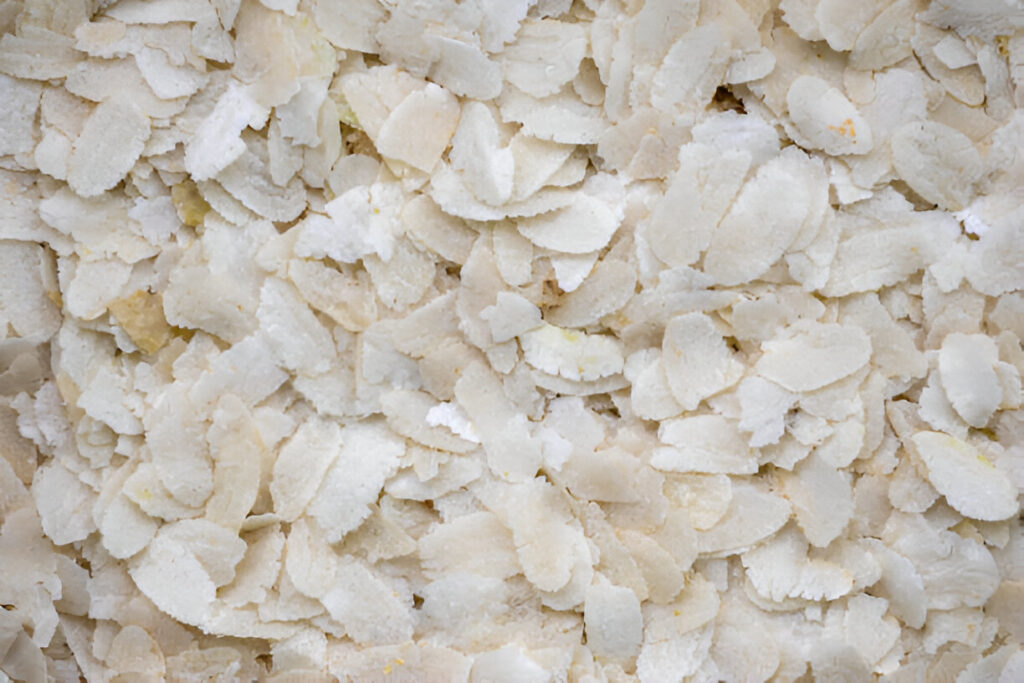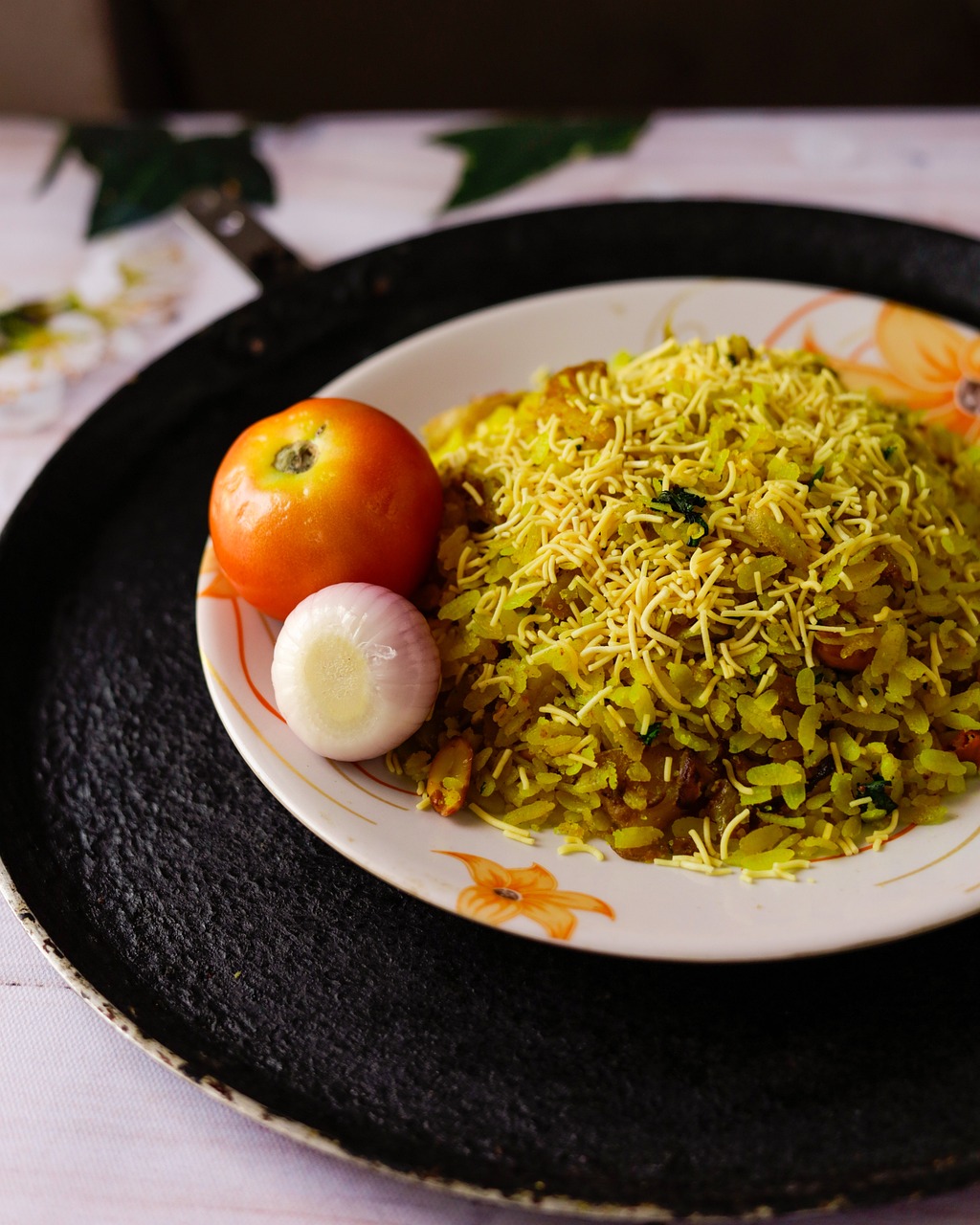Poha, a beloved dish made from flattened rice, has a special place in the hearts and kitchens of millions across India. From bustling street vendors to cozy household breakfasts, poha’s simplicity, versatility, and delightful taste have made it a staple in Indian cuisine. Let’s explore the origins of poha and how it has become an essential part of breakfast menus throughout the country.
The Origins of Poha
Historical Roots
- Ancient Beginnings: The exact origins of poha are not well-documented, but it is believed to have been a part of Indian cuisine for centuries. Flattened rice, the main ingredient in poha, has been used in various forms in South Asian cooking for a long time.
- Cultural Significance: Poha is especially significant in the western and central regions of India, including Maharashtra, Madhya Pradesh, Gujarat, and Rajasthan. Each region has its unique way of preparing and flavoring poha, reflecting the local tastes and traditions.
Poha on the Indian Streets
Street Food Delight
- Popularity: Poha is a popular street food, particularly in cities like Indore, Mumbai, and Pune. Street vendors serve it hot, garnished with sev (crispy noodles), fresh coriander, and a squeeze of lime, making it a favorite breakfast or snack option.
- Varieties: On the streets, you can find different variations of poha, such as Kanda Poha (with onions), Batata Poha (with potatoes), and Indori Poha, which is known for its sweet and tangy flavors.

Poha in Every Household
A Breakfast Staple
- Ease of Preparation: One of the reasons poha is so beloved in households is its ease of preparation. It requires minimal ingredients and can be cooked quickly, making it an ideal breakfast choice for busy mornings.
- Nutritional Value: Poha is not only tasty but also nutritious. It is a good source of carbohydrates, iron, and fiber. When prepared with vegetables and nuts, it provides a balanced meal that keeps you energized throughout the day.
Regional Variations
- Maharashtra: In Maharashtra, Kanda Poha (poha with onions) is a breakfast favorite. It is typically garnished with fresh coriander, grated coconut, and a dash of lime.
- Madhya Pradesh: Indori Poha is famous for its unique combination of poha, sev, pomegranate seeds, and a hint of sweetness. It is often accompanied by jalebi, making for a delicious breakfast duo.
- Gujarat: In Gujarat, poha is often made with peanuts and served with a side of buttermilk or curd.
Flattening Journey of Poha: From Rice to Poha
Did you know poha is just flattened rice? Let’s see how this transformation happens, turning simple rice grains into the versatile, beloved staple we know as poha.
The Making of Poha
1. Harvesting and Cleaning
- Rice Selection: The journey begins with selecting high-quality rice grains, usually medium to thick grains, as they are ideal for making poha.
- Cleaning: The rice grains are thoroughly cleaned to remove any impurities, dirt, or husks. This step ensures that the final product is clean and ready for the next stages.
2. Soaking
- Water Immersion: The cleaned rice grains are soaked in water for a few hours. This soaking process softens the rice, making it easier to flatten.
- Drainage: After soaking, the water is drained off, and the rice is allowed to dry partially. The grains should be moist but not too wet.
3. Flattening
- Mechanical Pressing: The partially dried rice grains are then fed into a flattening machine. These machines consist of large rollers that press the rice grains, flattening them into thin, light flakes.
- Traditional Method: In some regions, traditional methods are still used, where soaked rice is flattened using large wooden mallets or stones.
4. Drying
- Sun Drying: The flattened rice flakes are spread out on large surfaces and left to dry under the sun. Sun drying helps reduce the moisture content, making the poha flakes crispy and suitable for storage.
- Industrial Drying: In commercial production, industrial dryers are used to speed up the drying process and ensure uniformity.

5. Sieving and Sorting
- Removing Impurities: Once dried, the poha flakes are sieved to remove any broken pieces or impurities. This ensures that only whole, intact flakes are packaged.
- Sorting: The flakes are sorted based on size and thickness. Different thicknesses of poha are used for various recipes and culinary preferences.
6. Packaging
- Storage: The sorted poha is then packed in airtight containers or bags to preserve its freshness and prevent moisture from getting in.
- Distribution: Finally, the packaged poha is distributed to markets, ready to be used in homes and eateries across the country.
Healthy Breakfast? Poha vs. Other Breakfast Options
Poha, a traditional Indian breakfast, not only delights the taste buds but also packs a punch in terms of nutrition. Let’s explore how poha stands out compared to other common breakfast items such as cereals, and how you can make it even healthier.
Poha: A Nutritious Start to Your Day
1. Nutrient-Rich
- High in Carbohydrates: Poha provides a good amount of complex carbohydrates, which are essential for energy. Unlike refined cereals, poha’s complex carbs break down slowly, providing sustained energy levels.
- Rich in Iron: Flattened rice retains some of the rice bran, making it a decent source of iron. This is especially beneficial in preventing anemia.
- Low in Calories: Poha is relatively low in calories, making it a great choice for those looking to maintain or lose weight.
2. Digestibility
- Easy on the Stomach: Poha is light and easy to digest, making it an excellent breakfast option for all age groups. It doesn’t cause bloating or discomfort, unlike some heavier breakfast items.
Poha vs. Other Breakfast Cereals
1. Processed Cereals
- Added Sugars: Many commercially available breakfast cereals contain high amounts of added sugars, which can lead to energy spikes and crashes, and contribute to weight gain and other health issues.
- Preservatives and Additives: Processed cereals often contain preservatives and artificial flavors, which might not be the healthiest choice.
2. Nutritional Superiority of Poha
- Natural Ingredients: Poha is made from natural ingredients without the need for preservatives or artificial additives.
- Customizable: You can easily customize poha with a variety of vegetables, spices, and toppings, ensuring a balanced intake of proteins, vitamins, and minerals.
Making Poha Even Healthier
1. Add Vegetables
- Boost Nutrients: Adding vegetables like peas, carrots, bell peppers, and spinach increases the fiber, vitamin, and mineral content of your poha.
- Enhance Flavor: Vegetables not only make poha more nutritious but also add color and flavor, making it more appetizing.
2. Include Protein
- Nuts and Seeds: Add a handful of roasted peanuts, sesame seeds, or sunflower seeds for a protein boost and added crunch.
- Dairy or Plant-Based Options: Garnish with a spoonful of yogurt or a plant-based alternative for additional protein and probiotics.
3. Use Healthy Fats
- Cooking Oil: Use heart-healthy oils like olive oil, coconut oil, or mustard oil in moderation to prepare poha.
- Ghee: A small amount of ghee can enhance the flavor and provide beneficial fats.
4. Add Fresh Herbs and Spices
- Flavor and Health Benefits: Fresh coriander, curry leaves, and a squeeze of lemon juice not only enhance the flavor but also add beneficial antioxidants and vitamins.
Conclusion
Poha is an excellent breakfast choice that offers a balanced mix of carbohydrates, proteins, vitamins, and minerals. Compared to processed cereals, poha is a natural, versatile, and healthier option. By adding vegetables, protein sources, and healthy fats, you can make poha even more nutritious and delicious.
Stay curious with tales and tadka—until next time!




